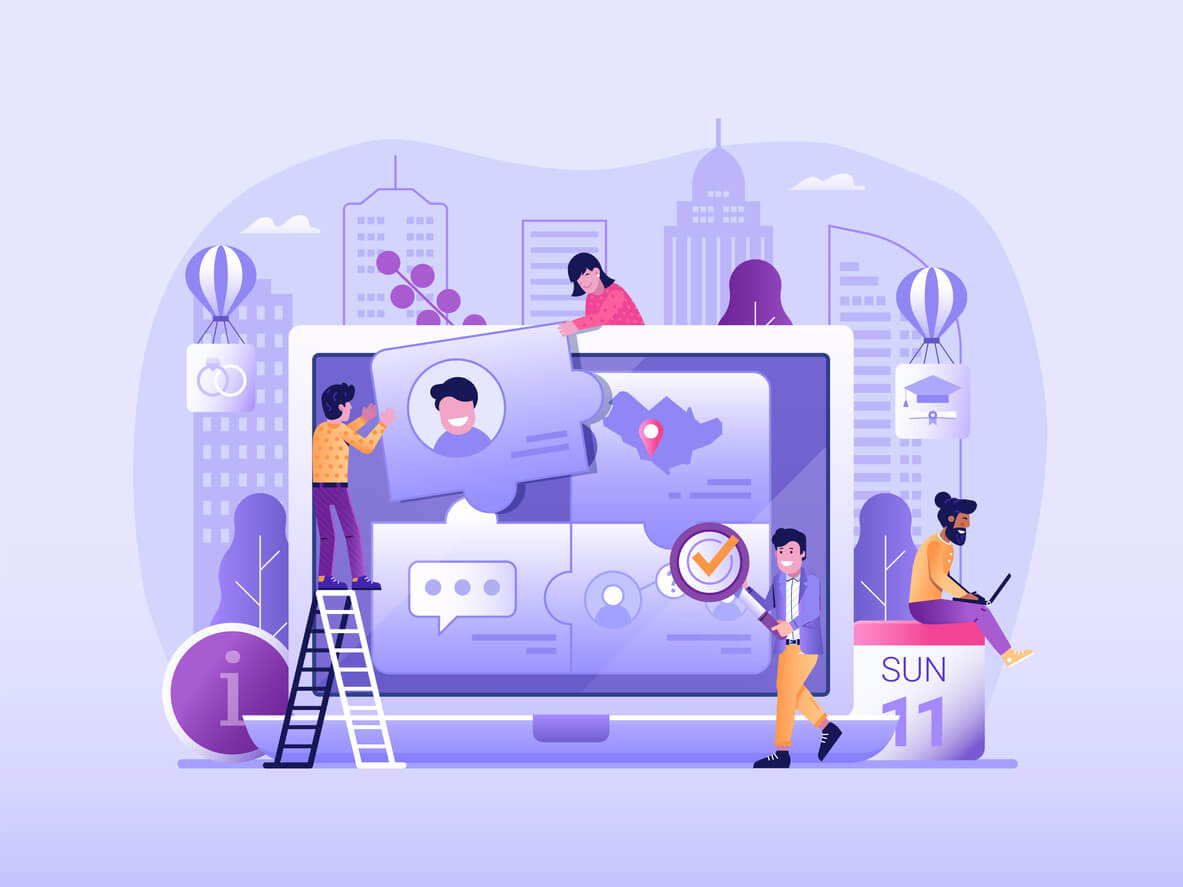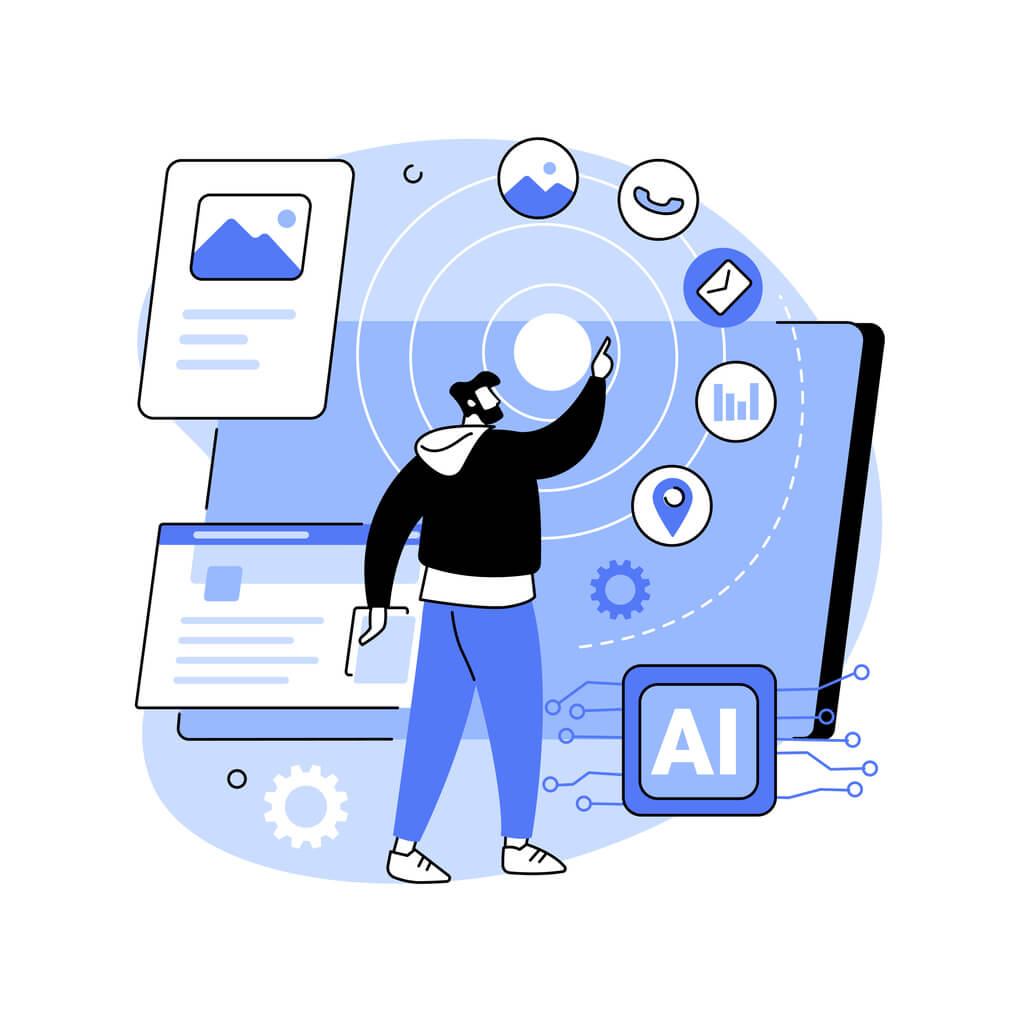Personalisation isn’t a new trend, it’s been a definable practice since the early 2000s. However, with increased user data collection and decreased attention spans, capturing audiences with targeted messaging is vital to stay relevant in the current digital landscape. If you’re looking to provide your users with a better experience, and increase your conversions in the process, we’ve got all the information you need to get started with website personalisation.
What is personalisation marketing?
Personalisation uses previously collected user data to create a tailored digital experience for a predetermined audience segment. A website personalisation strategy uses various datasets, such as purchase history, geolocation or site behaviour. Personalisation is about providing additional value to your end user, helping to guide them through the conversion process quicker and more efficiently. With targeted content and a unique-feel to the user experience, you’ll benefit from reduced bounce rates, increased session length and higher conversion rates. Additionally, users are much more likely to positively view a brand that gets their personalisation strategy right. An Accenture study found that 91% of consumers were more likely to shop with a brand that provided personalised recommendations and offers.
To get the most out of your digital personalisation strategy, you can implement it across a variety of mediums, such as:
- Website
- Social media
- Retargeting ads
In this article we’ll be specifically looking at website personalisation. To create a successful strategy, various departments will need to be engaged, such as design, UX and sales. But first, let’s take a look at the difference between two commonly misinterpreted tactics: personalisation and customisation.
Is personalisation the same as customisation?
Although they might seem one and the same, personalisation and customisation are inherently different. Customisation refers to changes made by the user when presented with a set of choices. Personalisation is completed for the user, using previously collected data to provide a predetermined ‘unique’ experience for a select audience segment.
Now you know how to identify personalisation, and how it differs from customisation, it’s time to dive into creating your own website personalisation strategy!
Getting started with website personalisation

First, you’ll need to explore who you’ll be creating a personalised experience for. Build rounded, contextual profiles of your target users by completing a robust persona exercise. This will help you to:
- Pinpoint your audience
- Qualify users
- Better understand user intention
- Create clear messaging
- Targeting an ‘ideal’ user with a specific intention
Once you’ve created personas, you’ll need to collect data to determine patterns and similarities in user behaviour. This information will help you qualify future users into a segment/persona, so you know the right user will receive the right messaging. There are two main categories that collected data falls into when it comes to personalisation: contextual data and behavioural data.
Contextual data is the building blocks of who a user is. Age, job title, geolocation and device are all examples of data that provides a basic understanding of who the individual is behind the IP address.
Behavioural data is the detail that informs the why. Search terms, previous purchases, buttons clicked and favourited items build a larger picture of a user’s intention. When pieced together, this data provides clues into what the user is looking for from your business. The more data you gather, the more refined and accurate your audience segmentation will be.
So now you’ve got a persona exercise under your belt, and you’ve collected enough data to qualify your users into your ideal segment, how do you actually personalise your website for a specific audience?
Website personalisation methods
Content
Whether it’s headings, product descriptions, or visuals, tailoring your content to match a specific user’s intent is a key personalisation method. If a user has visited your website before, why not trigger personalised content that complements their stage in the conversion funnel? This can even trickle down to microcopy, like call to action text, and areas that are integral to moving users onto the next stage of the journey. Not only will this provide a positive brand experience, but it’ll also make the next stage in the funnel more accessible.
A good example is demonstrated by Very.co.uk, who apply the user’s name (associated with their account details) and a relevant message related to the current weather in the user’s location (associated with their IP address and/or account details).

Source: This Is Retail
Very shows how personalisation has the power to create a much stronger bond between brand and user, and how this approach can benefit your business, as the retail giant saw a “significant uplift in conversions”.
Recommended products and services
You can use behavioural data to recommend relevant products and services to your users for increased upselling opportunities; examples of this can be found from the likes of Amazon, Netflix and Spotify. All three use AI to find patterns in previous purchases, browsing history and user behaviour, which is then used to suggest relevant content to their users. The more data organisations collect, the more we can expect our digital experiences to feel individual to us. Ultimately, proactively utilising user data to give users more of what they love is a win-win for them and your business.
Forms
Becoming brand aware and converting users sit at opposite ends of the conversion journey. Treating users in different ways to reflect this will provide a better experience for qualified users who are closer to converting. Having a comprehensive understanding of the conversion process, and what that looks like individually to your brand’s website, is vital to maximise the opportunities afforded with form personalisation.
User journeys
Websites can provide set journeys based on a variety of user information; many websites do this by asking users to select their job role, intention (e.g buy, sell, learn more) or interests, and provide a personalised journey from that point onwards. This personalisation technique requires extensive UX and design work to account for multiple user journeys and end goals. You’ll also have to capture enough data to correctly plan the route, otherwise you could end up frustrating users by directing them to the wrong page and forging a bad experience. Personalising a user journey might seem like a lot of work, but you’ll reap the rewards in conversion uplifts if you intuitively direct the right users to a pinpoint location on your site.
Personalisation considerations
Data collection consent
In light of the UK-GDPR, being crystal clear with users about what data you’re collecting, and why, is imperative. If you’re not honest from the start, it could lead to distrust and negative brand implications. Personalisation is about putting users first, making their user journey more effective and providing an experience that feels intuitive to their intentions. However, if they don’t want to be targeted in this way, they’re well within their rights to decline consent. If you’re unsure whether your site is compliant, or you need help getting started on the cookie consent journey, we’ve written a dedicated article on cookie compliance to help you out.
Entrances
Not every user is entering your site on the homepage. Although adding personalisation to your homepage is a great way to capture qualified users, review whether you’ll carry over any personalisation methods to internal pages. Take a look at the data related to your inner pages to see which ones would benefit from a tailored approach. Keep in mind it takes time to strategise, develop and test any website personalisation methods, so capturing a small pool of qualified users might not be worth the time spent on personalising for them.
Personalisation isn’t for everyone
Be specific with who you personalise for. Although all your users are worth investing time into, personalisation can be a long process. Review your site analytics and CRM to unpick your user base, as this will help you decide which stage of the conversion funnel to target. The more data you have, the more informed your decisions will be, which will lead to a higher chance of success.
A personalisation strategy that isn’t set in stone
Take an adaptive approach to your personalisation strategy, so you can tweak it where necessary for success. As your business grows, your strategy will need to change to account for larger audience segments, different personas or increased budgets. When implemented correctly, personalisation should reduce your cost of acquisition, lower your bounce rate and increase your conversions for an overall uplift in positive website metrics.
In this article we’ve covered a few of the personalisation methods you can try, but when you consider elements like social sign-ins, third-party site integrations and improving technologies, it’s easy to see why we’re only at the start of the personalisation era.
Whichever method you choose, remember that the user comes first. Their experience should always be relevant to their preferences, behaviour and intentions. When in doubt, keep it simple!
Looking to implement complex personalisation on your site? Maybe you need support with an upcoming UX design project? Check out our UX services to see how we can help!

